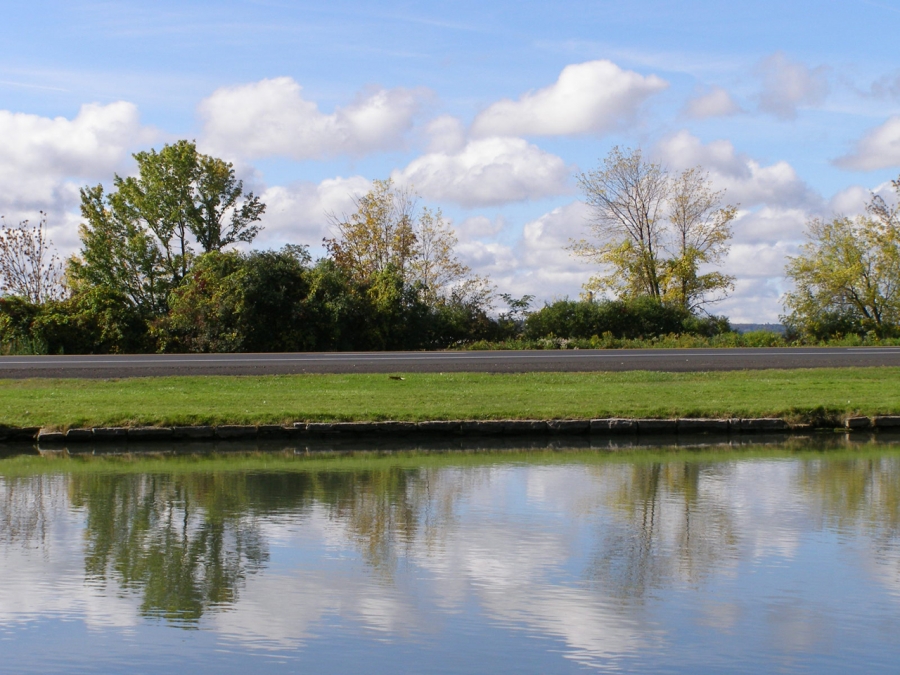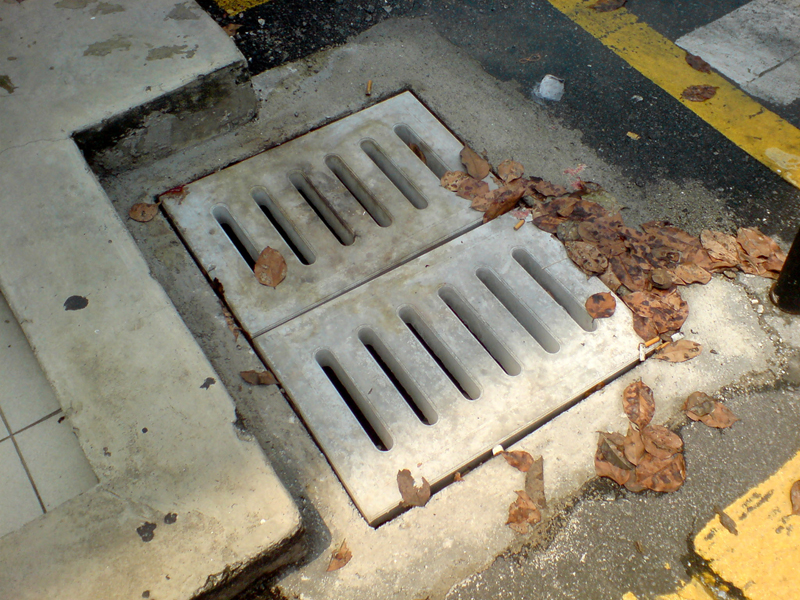Inspection and Maintenance of Stormwater Systems
Theodore (Ted) E. Scott is the Managing Member of Stormwater Maintenance, LLC, in Hunt Valley, Maryland. He has provided our audience some insights into the inspection, maintenance, and repair of storm water systems. There are three categories of these systems that we’ll investigate: surface basins, underground structures and drainage systems.

Surface Basins
Surface basins are typically “wet” or “dry” in outward appearance. Wet basins (those with obvious standing water present for extended periods) in the context of storm water management systems are most likely serving as retention ponds. Retention ponds can perform both flood control and water quality control functions. They allow for the settling of particles and the removal of debris from storm water flow. Trash, grit, and soil particles that pollute the environment are prevented from continuing downstream. These pollutants are floated, settled, or mechanically separated from the storm water flow by the design characteristics of the surface basin and its inflow and outflow structures.
Dry surface basins (where no standing water may be obvious) are generally used only for flood control or peak storm flow management. They detain excess storm water flow temporarily, to avoid over-burdening the downstream components of a natural water body or storm water conveyance system. Detention ponds allow storm water designs to accommodate the eventuality of major storm events like 1-year, 5-year, 20-year rain storms, etc. This saves construction costs in that a detention pond is a water flow shock absorber. It manages peak storm flow rates, allowing other system components (pipes, for example) to be smaller downstream and therefore cheaper.
These rules of thumb about categorizing surface basins based on their wet or dry appearance alone are not always conclusive. Depending on their design, both “wet” and “dry” surface basins can perform concurrent roles of detention (peak flow management) and retention (water quality enhancement). Also, a normally dry detention pond might have just absorbed a peak flow and would therefore have a wet appearance. A normally wet retention pond may be undergoing maintenance and be temporarily dry.
In any case, surface basins, whether they’re wet or dry will have some common features and some similar inspection, maintenance and repair concerns.
Earth Embankments
Regardless of the type of surface basin, they’re designed to contain large volumes of water. The maintenance of a basin’s earth embankments is always a primary focus area, particularly considering the potential downstream damage that could result from an embankment failure. Once failure of a basin’s earth embankments begins, there’s little to do except move out of the way as quickly as possible!
Earth embankments are normally seeded with herbaceous or grassy vegetation, which should be carefully maintained. Routine inspections are recommended to ensure woody vegetation such as small trees has not taken root on the embankments. Deep root systems can structurally weaken the embankment, cause surface soil erosion, obstruct a basin’s inflow and outflow systems, or result in “piping” -- the formation of erosive water channels that can progress through the embankment’s interior. Well maintained and trimmed grasses on basin embankments also allow for similarly destructive animal burrows to be quickly identified and repaired.
Sediment Build-up at Intakes
Intakes to surface basins are often lined with rip-rap (rock or concrete pieces) or gravel to slow storm water inflow rates. This helps prevent erosion and controls sediment build-up at a surface basin intake. During high inflow rates rip-rap can be displaced, allowing for erosion of the underlying soil and for the build-up of sediments in the inflow pipes (or the outflow structure downstream). Rip-rap should be routinely inspected for proper depth, placement, and sediment build-up and should be cleaned or replaced as needed.
Blockages in the Outflows
The outflow piping system of a surface basin is one of the most expensive and important features. It needs to be routinely inspected to ensure a clear pathway for the storm water outflows leaving the basin. Sediment accumulations, root systems, trash, and debris are routine reasons for outflow blockages. If the water outflow is impeded and storm water accumulates excessively in the basin, its embankments could be over-topped which can be damaging or quickly result in an embankment failure.
Underground Structures
Underground structures are usually designed to mirror the functionality of their surface basin cousins, but at locations where real estate costs and usable space are at a premium. They’re commonly built beneath a parking lot or other urban site. Most commonly, underground structures are subsurface retention or detention devices in the form of storm water vaults or pipe arrays. They’re often made of pre-cast concrete, but there are many vendors and material variations in use. These underground structures may be as large as one-half to three-fourths acre in their overall plan-view footprint. With so many proprietary options on the market, it’s hard to specify any exact recommended procedures, but routine inspections and cleaning are always important. The inspection and maintenance routine will be predicated on the type of area served. For example, a convenience store parking lot will generate significantly more trash and require more frequent attention than an office park of similar size.
For underground water quality facilities where sediments have accumulated significantly, sediment extraction and disposal using a high-powered vacuum truck is the normal procedure. For underground detention or dry structures, maintenance of the low-flow orifice is a key item since it is what regulates storm water outflows to a specified design volume. The low-flow orifice needs to be inspected and cleaned of any trash, debris, or sediment.
Drainage Systems: Catch Basins, Manholes & Pipes
Proper maintenance of a storm water drainage system begins with the catch basins for good reason. They are the front line of defense for any storm water drainage system. Avoiding trash and sediment build-ups at the catch basins will keep the rest of the system downstream clean. An appropriate inspection and cleaning routine of catch basins may be every few months or every two years, depending upon a drainage system’s use and location. Catch basins can also be cleaned by vacuum truck or by work crews using hand tools.

Settling or sink holes around manholes and catch basins is a recurring problem that Ted has seen during his firm’s routine inspections. There are usually two culprits.
- One is soil or pavement settlement around the perimeter of the structure due to poor soil compaction during initial placement.
- Another is failure to get a good watertight seal between the manhole or catch basin and its outflow pipe, which produces soil erosion and settlement. Poor connections to outflow pipes might result in more noticeable settling on one side of the manhole or catch basin. Sinkholes caused by poor compaction may result in more even settling around the structure’s perimeter.
In either case, identification of the root cause of the settling is an important first step before repairs can be completed. Excavation, pipe repairs, and new back fill with re-compaction are usually required to prevent future settling.
For each of these three storm water infrastructure systems -- surface basins, underground structures, and drainage systems the key inspection and maintenance goal is to keep the flow of storm water clear of any obstructions. Structural repairs to these systems are not common compared to the routine inspection and maintenance recommendations highlighted in this article. When major structural repairs are needed, they are most commonly the result of initial construction oversights.
Theodore E. Scott, PE, CPESC, LEED AP, was a technical contributor to this feature. He is the Managing Member of Stormwater Maintenance, LLC, in Hunt Valley, MD. www.SWMaintenance.com

Andrew Kimos
Andrew Kimos completed the civil engineering programs at the U.S. Coast Guard Academy (B.S. 1987) and the University of Illinois (M.S. 1992) and is a registered Professional Engineer in the state of Wisconsin. He served as a design engineer, construction project manager, facilities engineer, and executive leader in the Coast Guard for over 20 years. He worked as a regional airline pilot in the western U.S. before joining the Buildipedia.com team as Operations Channel Producer.
Website: buildipedia.com/channels/operations
